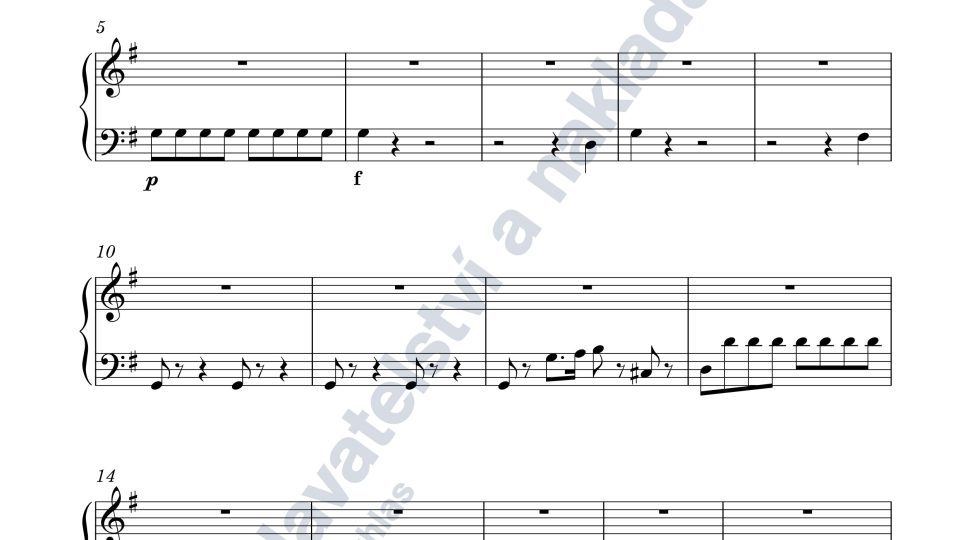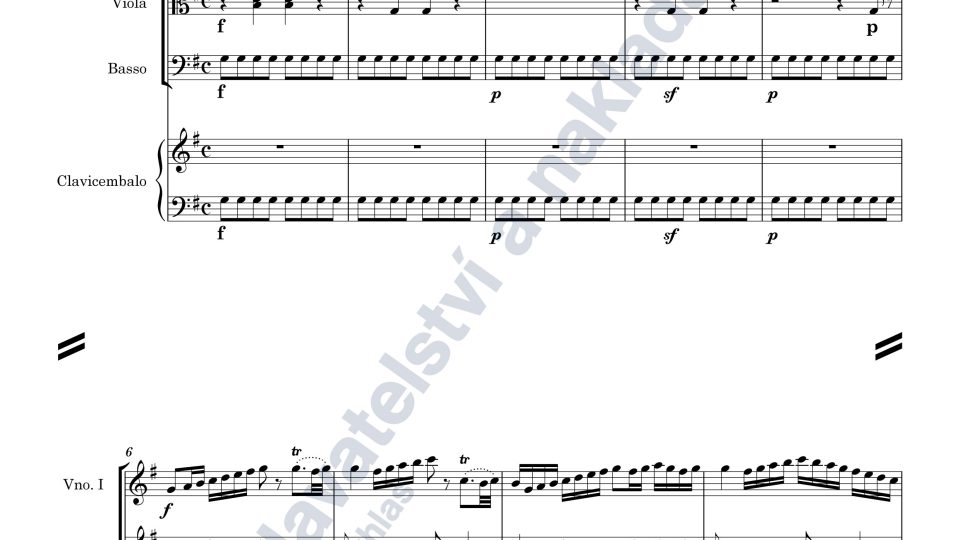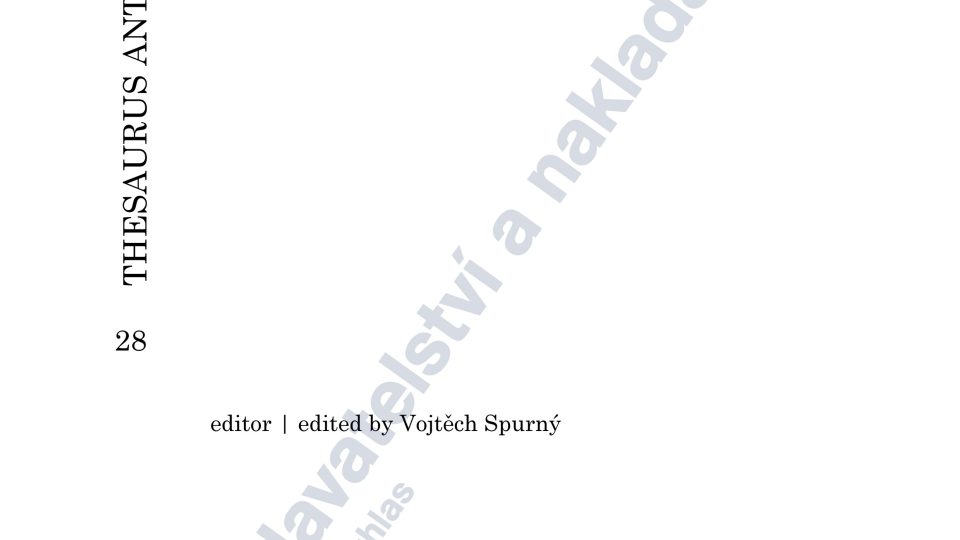Concertino per il clavicembalo, due violini, viola e basso in G - František Xaver Dušek (ed. Vojtěch Spurný)
Among Czech composers of the second half of the 18th century composing in Bohemia, not abroad, Dušek was undoubtedly one of the most important authors of instrumental music – most important are his orchestral, chamber and piano composition.
He is proved to be the author of 37 symphonies, 20 string quartets, 21 string trios, 49 parthias for brass instruments, 5 serenades, 3 divertimentos, 13 minuets, 9 cembalo concertos, 8 cembalo concertinos, 28 cembalo sonatas for two hands and 7 cembalo sonatas for four hands, 6 cembalo sonatinas and 7 variation cycles. The only authentic vocal composition is 5 songs for children in the collection of 25 songs by V. V. Mašek (1792). Some manuscripts from Pacht’s archive are dated till the 1760s (starting with 1761), many compositions (unfortunately mostly lost or still unfound) are mentioned in Breitkopf’s catalogues from 1771–1787, the youngest is the print of piano sonata from 1796, which means that Dušek’s compositions originated in the period from late Baroque to High Classicism - similarly to e.g. Haydn’s work.
Dušek’s music language builds on well-mastered foundations of the old Vienna school (Wagenseil) and it reaches a mature classicist Haydn-type expression. We will notice the influence of an Italian-type gallant style (Hasse, Galuppi, Rutini), the influence of Berlin school (J. A. Benda, C. Ph. E. Bach) — especially in slow movements of some sonatas and concertos and Baroque elements appear sometimes. The symphonies consist of three of four movements and the string quartets consist of four movements. Sonata movements reveal classicist structure (although of a smaller scale), the final movements are sometimes an early example of a sophisticated rondo form. Slow parts reveal a breeze of melancholy and emphasized expressiveness. Dušek’s melodical inspiration captures one’s attention also by occasional employment of Czech song melodies.
It all applies also to cembalo Concertino in G major. Composition incipit is listed in Breitkopf’s catalogues from 1782-1784 , which means that the composition was published in print in the times of cembalo taking over other keyboard instruments – both as concertanto and figured bass instrument. The inscription on the title sheet of the manuscript is not very important since the term “clavicembalo” was used in general for all keyboard stringed instruments, more as a historical situation.
Taking into account the character of the composition and the number of preserved parts, it is clear that the composition was intended for a chamber orchestra with four bowed accompanying instruments.
The original of cembalo concertino by F. X. Dušek is kept in the Archive of Czech Radio under a call number ARCH 19.
Other compositions by František Xaver Dušek pulished in Czech Radio:
Concertino per il clavicembalo, violino, viola e basso in G
Concerto per il clavicembalo, due corni, due violini, viola e basso in D
Concerto per il clavicembalo, due corni, due violini, viola e basso in Es
Concerto per il clavicembalo, due violini, viola e basso in C




